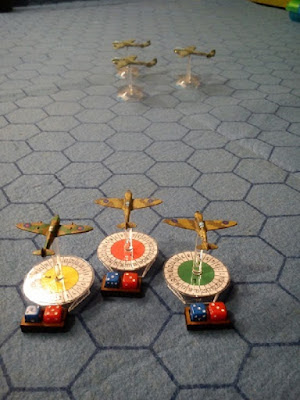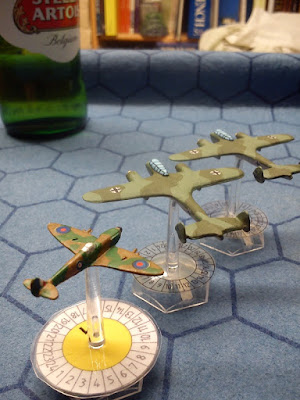When Jonathan of Palouse Wargaming Journal offered to host a remote wargame for the Rejects, there was no way we were going to turn down the opportunity.
He gave us a choice of periods, so we chose the Franco-Austrian War of 1859. It's a period that I have taught as part of the unification of Italy, though I have never looked at the battles of the various wars of Italian independence in any detail. That made this a welcome moment to deepen one's knowledge.
Background
The origins of the war of 1859 are a little convoluted, but essentially find their short term roots in the machinations of the Sardinian-Piedmontese Prime Minister Camille Cavour. His foreign policy goal was to have a kingdom of Northern Italy, ruled by the Piedmontese monarchy - Victor Emmanuel II at this time. This would require kicking the Austrian Empire out of Lombardy and Venetia first. To do this Cavour obtained an alliance with the French emperor Napoleon III, and engineered a dispute with Austria whom he manipulated so they were seen as the aggressors.
And so to war!
The big battles are those of Solferino and the Battle of Magenta. Bloody affairs, where more Frenchmen died fighting for Italian independence than Italians.
Jonathan provides an excellent introduction and background to the game. He also has his battle reports as well. His narrative style is worth the visit. So, I won't reinvent the wheel. Just follow these links
Palouse Wargaming Journal: On the Table Today is...
Rules: amended Fields of Honor on a grid
Figures: 15mm
Victory Conditions:
Major: Hold San Martino, Contracania, bridge to Madonna del Scoperta, and Pozzolengo.
Minor: Holder of 2 of 3 San Martino, Contracania, bridge to Madonna del Scoperta. Austrians must hold Pozzolengo too.
Deployment
The Austrians were comprised of me (Benedek and Wavervliet), David (Lippert) and Lee (Philippovic).
Our Starting positions are as shown - both images courtesy of Jonathan.
 |
The Sardinians were Ray (Victor Emmanuel II), Ian and Steve.
The Sardinians started the game with Mollard's brigade on the table with the other two arriving.
The Austrian battle plan was for David to advance slightly left and towards Contracania. I (Wavervliet) would edge forward slightly to keep the right flank, while Lee (Philippovic) would attack through the centre towards Ortaglia and San Martino. The reserve artillery and cavalry would move to take position just in advance of San Donnino. Of course, we had discussed a Plan B depending on how the arriving Sardinians were deployed.
In all of this we had decided to use our main advantage of better small arms to out-range the Sardinians and only charge when necessary and when the Sardinian position had been softened up.
The Battle
The game was played over two sessions. I must say at the outset that Jonathan proved to be a gracious host and an excellent umpire.
Ray was absent for the first session so Steve took command of Mollard and Arnaldi. His first decision was to charge his cavalry at the jagers on the Austrian right.
However, the Sardinian cavalry seemed to lack punch, with the jagers throwing back one of the squadrons.
David (Lippert) on the Austrian left pushed up onto the plateau of San Martino. Philoppovic advanced into the Austrian centre. Meanwhile, the reserve artillery and 4 squadrons of cavalry started their movement to be ready to bolster the left flank and help protect the bridge.
Steve (Mollard) quickly sent his cavalry against David's artillery on the road, and persisted in his assault against my jagers on the right.
Alas, Mollard's cavalry prove to be a disappointment. With one having to withdraw from the face of the guns, and the other being destroyed in melee with the jagers.
But there is no relief for Steve's horseman when they find themselves wiped out by rifle fire from Lee's (Philippovic) advancing jagers.
Looking down the table from the Sardinian end, Ian (Morozzo) brings on his troop; splitting his command on the two flanks of Victor Emmanuel's forces.
Steve (as Arnaldi) had previously moved up the centre towards San Martino, and taken cover in the vineyards. From which he would never abandon during the game.
It looked like the Austrian reserves might just make it to the right flank and the town of San Donnino in the nick of time.
Throughout, David (Lippert) on the plateau has been pouring small arms fire at the towns... but to little real effect. Though his units were themselves taking casualties.
Ian (Morozzo) grabs the initiative and throws his cavalry forward and onto the flank of David's infantry in front of San Donnino. Ian cuts through the line and forces them into the town.
At the end of the first session of play, the positions are shown below.
For the second session, Ian and David were unable to attend, but Ray did. As such, Ray took over command of Ian's brigade on the flanks, and Lee assumed command of Lippert's brigade on the Austrian left.
The long artillery duel on the road was finally concluded with Lee destroying the Sardinian gun.
As the clock slowly counts down, the Austrians advance on the right and Lee (Philipovic) is moving back up onto the plateau.
At this point, the start of turn 8, Jonathan rolled to see if this would be the last turn. Anything but a one on a d10 would see another after this. Alas, Jonathan rolled a one. Exactly what the Sardinians wanted. Effectively, this now guaranteed a Sardinian win.
Steve (Mollard and Arnaldi) delivered charges at the advancing jagers in the centre right...
... but honours are even with one victory each.
Seeing an opportunity to catch a lone bersagieri unit, two squadrons of the Austrian reserve are released by Benedek to cut down the wayward Sardinians...
Which is exactly what they did! Whilst at the same time dispatching, with an effective artillery barrage, Italian troops skulking in the woods on the left flank.
The Austrians decided to charge the Sardinians in the vineyards. But the imperial troops were obliged to retire when they made no headway.
And so the turn and the game ended.
Conclusions
This was a superb game which was excellently organised and hosted by Jonathan. The rules, with Jonathan's adaptations, really worked well for remote gaming via Zoom. The scenario was well conceived and well balanced. The umpiring throughout was even handed, good humoured and helpful throughout.
As for the result. As the Sardinians held the towns of San Martino and Contracania they were declared to have achieved a minor victory. Well done to Ian, Ray and Steve who played well and contributed to an enjoyable occasion.
The Sardinians did what they had to do - hold and defend, and they did it well.
As for us, the Austrians, we were not aggressive enough early enough. In this, as commander in chief, I have to take the burden of responsibility for this decision. I was too focused on the Austrian advantage of having longer range small arms and a little fixated on defending the line of communication - Pozzolengo and the bridge to Madonna del Scoperta. I felt that we had time to degrade the Sardinians at arms length. We did not!
David and Lee played magnificently as Lippert and Philoppovic respectively. They handled their brigades ably and in good order.
As a last word I should comment that the second session saw unbelievable morale rolls from all sides, for example one Sardinian unit came under heavy fire from artillery and two infantry units. Seven hits were scored and Steve saved them all! This undoubtedly kept the casualty list to the barest of minimums, and caused some mirth and exclamations of disbelieve amongst all present.
A splendid game in splendid company.







































